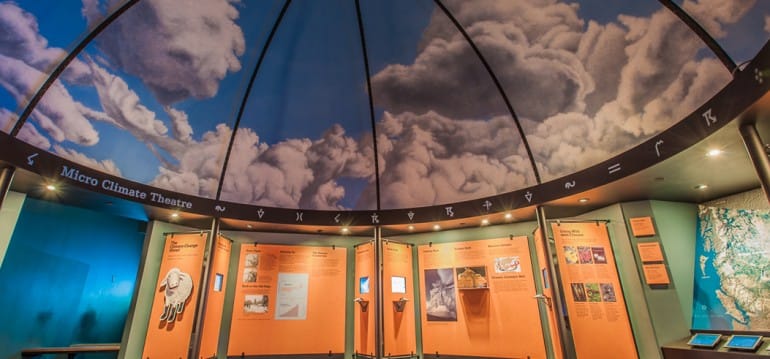BY: HANNAH MONKMAN
Hello all! I am very excited to join the Musings team as the Contributing Editor for Museum Innovations this summer! Today, I wanted to explore a topic near and dear to my heart (and one often neglected in discussions of information studies): environmental sustainability. While many Canadian museums are addressing sustainability in terms of cultural relevance and community involvement, less seem to be integrating green strategies in their operations – perhaps the idea of "going green" is daunting to museum professionals who are already struggling with a lack of resources. Whatever the situation, environmental sustainability should be a concern to all museums on some level.
After all, museums must navigate not only changing societies, but also a changing planet. So, what are museums doing to address this issue, and how can we incorporate those innovations into our future actions as museum professionals?
Educating Our Publics: The first (and more intuitive) role museums can take on with regards to environmental sustainability is that of the interpreter or educator. Through events and programming, art installations, exhibit displays, or even through the dedication of entire galleries, museums can help to educate the public about any and all of the issues related to the environment, including climate change, pollution, and species at risk of extinction.
 |
| "Climate Rules!" at the Royal BC Museum in Victoria is "one of the first galleries ever built that explains how climate is changing as a consequence of global warming." Source. (Photo © RBCM.) |
Reflecting Within: Museums can – and should – address environmental sustainability by being mindful of their own internal operations. Some museums have already gone to great lengths in their pursuit for sustainability. For example, the Auckland War Memorial Museum in New Zealand has reduced its carbon footprint by 50% and reduced their waste to landfill carbon emissions by 72% since 2010. With such impressive numbers, there's a good reason to be optimistic about implementing our own initiatives in more Canadian museums!
 |
| Yayy!! Source. |
Just to get our brains thinking about how we might integrate environmental sustainability in practice, I've summarized some of the most important and/or easiest strategies to implement:
- A Sustainable Building. New museums or those undergoing renovations have the advantage of establishing sustainable buildings or building components into the design of the new architecture, such as by installing solar panels. The Kentucky Coal Mining Museum is doing just that – perhaps ironic due to the nature of the museum's theme. This project is not just a shift to a green energy source for the sake of being environmentally conscious, but is also expected to pay itself off in 5-7 years and then start saving the museum a substantial amount of money in energy costs. How's that for incentive?
- Energy-efficient Operations. From maintaining vital climate controls for collection preservation to powering computers in office spaces, the daily operations of a museum can consume a huge amount of energy. Lighting is typically a major part of this, but costs can be cut down by using automated systems to light rooms only when in use, or even simply by using energy-efficient bulbs. Of course, if the rooms are housing collections, energy-efficient lighting should always be in sync with preservation considerations. LED lights are typically ideal, since they cut down on energy usage as well as not producing excess heat or UV rays that may damage artifacts. The Biosphere (the Environment Museum in Montréal) models this strategy – amongst other green technologies – with motion sensor lights in its washrooms and offices, in addition to an automated system throughout the building so that its lights are only on during opening hours. Water consumption is also a concern, and it's typically a good idea to install water meters to monitor usage.
- Green Exhibit Design. On a smaller scale than the building itself, museums can also look to their future exhibits when thinking about sustainability. In 2013, the AAM published a "Green Exhibit Checklist" through a project called exhibitSEED, which promoted sustainable practices for exhibit design – unfortunately, its website is no longer running. Nevertheless, the checklist helps guide museum professionals in thinking about their exhibits in terms of sustainability by focusing on five main areas: reducing new material consumption; using local resources; reducing waste; reducing energy consumption; and reducing products with toxic emissions.
- Management and Documentation Policies. All organizations produce large
amounts of waste as a by-product of their operations, and museums are no
exception; however, museums can reduce their waste by implementing policies
across their organization. For example, creating a printing and paper policy
that requires employees to physically print documents only when absolutely
necessary, or to only print double-sided, can cut down on the number of paper
documents destined for the recycling bin. It is also important to ensure that
your museum has a thorough waste management policy. As a general guideline, it's good
to follow the 4R's: reduce at the source, reuse, recycle, and reclaim.





No comments:
Post a Comment
Note: only a member of this blog may post a comment.